Salt Lake Aerosol Overview: Emissions, Chemical Composition and Health Impacts under the Changing Climate
Abstract
:1. Introduction
2. Global Distribution of Salt Lakes
| Lake | Country | Area (km2) | Maximum Depth (m) | Salinity (%) | References |
|---|---|---|---|---|---|
| Caspian Sea | Azerbaijan, Iran, Russia, Turkmenistan, Kazakhstan, | 371,000 | 1015 | 15 | Pervov et al. (2003) [38] |
| Urmia Lake | Iran | 5800 | 16 | 300 | Babkin (2003) [39] |
| Aral Sea | Kazakhstan, Uzbekistan | 8550 | 28 | 100 | Micklin (2007) [40] |
| Dead Sea | Israel, Jordan, Palestine | 940 | 320 | 340 | Yechieli et al. (1998) [41] |
| Balkhash | China, Kazakhstan | 17,000 | 27 | 7 | Williams (1996) [29] |
| Dabuxun | China | 184 | 0.4 | 360 | Yu et al. (2001) [42] |
| Qinghai | China | 4278 | 26 | 14 | Lister et al. (1991) [43] |
| Van | Turkey | 3570 | 450 | 22 | Kempe et al. (1991) [44] |
| Great Salt Lake | United States | 4660 | 14 | 250 | Wurtsbaugh & Berry (1990) [45] |
| Salton Sea | United States | 891 | 12 | 33 | Williams (1996) [29] |
| Mono Lake | United States | 158 | 46 | 95 | Williams (1996) [29] |
| Mar Chiquita | Argentina | 5770 | 8.6 | 360 | Reati et al. (1996) [46] |
| Salar de Uyuni | Bolivia | 10,500 | - | 271 | Schmidt (2010) [47] |
| Natron | Tanzania | 1040 | 0.5 | 12 | Schagerl (2016) [48] |
| Assal | Djibouti | 54 | 40 | 277 | Schagerl (2016) [48] |
| Nakuru | Kenya | 42 | 4.6 | 62 | Jirsa et al. (2013) [49] |
| Bogoria | Kenya | 33 | 9 | 36 | Jirsa et al. (2013) [49] |
| Eyre | Australia | 8430 | 5.7 | 310 | Jankowski & Jacobson (1989) [50] |
| Corangamite | Australia | 233 | 4.9 | 50 | Williams (1996) [29] |
| Tyrrell | Australia | 300 | 0.5 | 160 | Heidelberg et al. (2013) [51] |
| Elton | Russia | 155 | 0.6 | 300 | Argaman et al. (2012) [52] |
| Gallocanta | Spain | 6 | 0.1 | 37 | Pearson et al. (2008) [53] |
| Chiprana | Spain | 0.3 | 5.6 | 73 | Vila et al. (2002) [54] |
| Fuente de Piedra | Spain | 14 | 0.5 | 220 | García & Niell (1993) [55] |
| Pétrola Lake | Spain | 2 | 2 | 50 | Valiente et al. (2018) [56] |
3. Production Mechanism of Salt Lake Aerosols
4. Chemical Composition of Salt Lake Aerosols
5. Impact of Climate Change on Emissions and Chemical Composition of Salt Lake Aerosols
5.1. Impact of Climate Change on Salt Lake Aerosol Emissions
5.2. Impact of Climate Change on Chemical Composition of Salt Lake Aerosols
6. Health Effects of Salt Lake Aerosols

7. Interactions between Salt Lake Aerosols and Climate Change
8. A Compendium of Findings and Future Recommendations
Author Contributions
Funding
Institutional Review Board Statement
Informed Consent Statement
Data Availability Statement
Acknowledgments
Conflicts of Interest
References
- Wang, Z.; Luo, P.; Zha, X.; Xu, C.; Kang, S.; Zhou, M.; Nover, D.; Wang, Y. Overview assessment of risk evaluation and treatment technologies for heavy metal pollution of water and Soil. J. Clean. Prod. 2022, 379, 134043. [Google Scholar] [CrossRef]
- Grythe, H.; Ström, J.; Krejci, R.; Quinn, P.; Stohl, A. A review of sea-spray aerosol source functions using a large global set of sea salt aerosol concentration measurements. Atmos. Chem. Phys. 2014, 14, 1277–1297. [Google Scholar] [CrossRef]
- Wang, X.; Hua, T.; Zhang, C.; Lang, L.; Wang, H. Aeolian salts in Gobi deserts of the western region of Inner Mongolia: Gone with the dust aerosols. Atmos. Res. 2012, 118, 1–9. [Google Scholar] [CrossRef]
- Chen, J.; Li, C.; Ristovski, Z.; Milic, A.; Gu, Y.; Islam, M.S.; Wang, S.; Hao, J.; Zhang, H.; He, C.; et al. A review of biomass burning: Emissions and impacts on air quality, health and climate in China. Sci. Total Environ. 2017, 579, 1000–1034. [Google Scholar] [CrossRef] [PubMed]
- Wang, X.; Hua, T.; Zhang, C.; Qian, G.; Luo, W. Salts in the clay playas of China’s arid regions: Gone with the wind. Environ. Earth Sci. 2012, 68, 623–631. [Google Scholar] [CrossRef]
- Gill, T.E. Eolian sediments generated by anthropogenic disturbance of playas: Human impacts on the geomorphic system and geomorphic impacts on the human system. Geomorphology 1996, 17, 207–228. [Google Scholar] [CrossRef]
- Zhang, X.; Zhuang, G.; Yuan, H.; Rahn, K.A.; Wang, Z.; An, Z. Aerosol particles from dried salt-lakes and saline soils carried on dust storms over Beijing. Terr. Atmos. Ocean. Sci. 2009, 20, 619–628. [Google Scholar] [CrossRef] [PubMed]
- Abuduwaili, J.; Gabchenko, M.V.; Junrong, X. Eolian transport of salts—A case study in the area of Lake Ebinur (Xinjiang, Northwest China). J. Arid. Environ. 2008, 72, 1843–1852. [Google Scholar] [CrossRef]
- Prospero, J.M. Environmental characterization of global sources of atmospheric soil dust identified with the NIMBUS 7 Total Ozone Mapping Spectrometer (TOMS) absorbing aerosol product. Rev. Geophys. 2002, 40, 2-1–2-31. [Google Scholar] [CrossRef]
- Gaston, C.J.; Pratt, K.A.; Suski, K.J.; May, N.W.; Gill, T.E.; Prather, K.A. Laboratory studies of the cloud droplet activation properties and corresponding chemistry of saline playa dust. Environ. Sci. Technol. 2017, 51, 1348–1356. [Google Scholar] [CrossRef]
- Ramanathan, V.C.P.J.; Crutzen, P.J.; Kiehl, J.T.; Rosenfeld, D. Aerosols, climate, and the hydrological cycle. Science 2001, 294, 2119–2124. [Google Scholar] [CrossRef]
- Lai, H.W.; Chen, H.W.; Kukulies, J.; Ou, T.; Chen, D. Regionalization of seasonal precipitation over the Tibetan Plateau and associated large-scale atmospheric systems. J. Clim. 2021, 34, 2635–2651. [Google Scholar] [CrossRef]
- Chen, S.; Xue, L.; Yau, M.K. Impact of aerosols and turbulence on cloud droplet growth: An in-cloud seeding case study using a parcel–DNS (direct numerical simulation) approach. Atmos. Chem. Phys. 2020, 20, 10111–10124. [Google Scholar] [CrossRef]
- Cziczo, D.J.; Froyd, K.D.; Hoose, C.; Jensen, E.J.; Diao, M.; Zondlo, M.A.; Murphy, D.M. Clarifying the dominant sources and mechanisms of cirrus cloud formation. Science 2013, 340, 1320–1324. [Google Scholar] [CrossRef] [PubMed]
- Hoose, C.; Möhler, O. Heterogeneous ice nucleation on atmospheric aerosols: A review of results from laboratory experiments. Atmos. Chem. Phys. 2012, 12, 9817–9854. [Google Scholar] [CrossRef]
- Intergovernmental Panel on Climate Change (IPCC). Climate Change—The Physical Science Basis; Working Group I Contribution to the Sixth Assessment Report of the Intergovernmental Panel on Climate Change; Cambridge University Press: Cambridge, UK, 2021. [Google Scholar]
- Helfer, F.; Lemckert, C.; Zhang, H. Impacts of climate change on temperature and evaporation from a large reservoir in Australia. J. Hydrol. 2012, 475, 365–378. [Google Scholar] [CrossRef]
- Hussein, A.M.; Al-Zubaidi, A.; Naje, A.S.; Al-Ridah, Z.A.; Chabuck, A.; Ali, I.M. A statistical technique for modelling dissolved oxygen in salt lakes. Cogent. Eng. 2021, 8, 1875533. [Google Scholar] [CrossRef]
- Obianyo, J.I. Effect of salinity on evaporation and the water cycle. Emerg. Sci. J. 2019, 3, 255–262. [Google Scholar] [CrossRef]
- Irwandi, H.; Rosid, M.S.; Mart, T. The effects of ENSO, climate change and human activities on the water level of Lake Toba, Indonesia: A critical literature review. Geosci. Lett. 2021, 8, 21. [Google Scholar] [CrossRef]
- Patti, B.; Fiorenti, F.; Fortibuoni, T.; Somarakis, S.; García-Lafuente, J. Editorial: Impacts of environmental variability related to climate change on biological resources in the Mediterranean. Front. Mar. Sci. 2022, 9, 1059424. [Google Scholar] [CrossRef]
- Mojtahedi, A.; Dadashzadeh, M.; Azizkhani, M.; Mohammadian, A.; Almasi, R. Assessing climate and human activity effects on lake characteristics using spatio temporal satellite data and an emotional neural network. Environ. Earth Sci. 2022, 81, 61. [Google Scholar] [CrossRef]
- Tusupova, K.; Peder Hjorth, A.; Morave, M. Drying lakes: A review on the applied restoration strategies and health conditions in contiguous areas. Water 2020, 12, 749. [Google Scholar] [CrossRef]
- Izdebski, A.; Pickett, J.; Roberts, N.; Waliszewski, T. The environmental, archaeological and historical evidence for regional climatic changes and their societal impacts in the Eastern Mediterranean in Late Antiquity. Quat. Sci. Rev. 2015, 136, 189–208. [Google Scholar] [CrossRef]
- Satgé, F.; Espinoza, R.; Zolá, R.; Roig, H.; Timouk, F.; Molina, J.; Garnier, J.; Calmant, S.; Seyler, F.; Bonnet, M.P. Role of climate variability and human activity on Poopó Lake droughts between 1990 and 2015 assessed using remote sensing data. Remote Sens. 2017, 9, 12. [Google Scholar] [CrossRef]
- Farebrother, W.; Hesse, P.P.; Chang, H.C.; Jones, C. Dry lake beds as sources of dust in Australia during the Late Quarternary: A volumetric approach based on lake bed and deflated dune volumes. Quat. Sci. Rev. 2017, 161, 81–98. [Google Scholar] [CrossRef]
- Hammer, U.T. Saline Lake Ecosystems of the World; Springer Science & Business Media: Berlin/Heidelberg, Germany, 1986; p. 616. [Google Scholar]
- Shiklomanov, I.A. Global water resources. Nat. Resour. 1990, 26, 34–43. [Google Scholar]
- Williams, W.D. The largest, highest and lowest lakes of the world: Saline lakes. Verhandlungen Int. Ver. Limnol. 1996, 26, 61–79. [Google Scholar] [CrossRef]
- Abuduwaili, J.; Issanova, G.; Saparov, G. Hydrology and Limnology of Central Asia; Springer Science and Business Media LLC: Dordrecht, The Netherlands, 2021. [Google Scholar]
- Wurtsbaugh, W.A.; Miller, C.; Null, S.E.; DeRose, R.J.; Wilcock, P.; Hahnenberger, F.; Howe, M.; Moore, J. Decline of the world saline lakes. Nat. Geosci. 2017, 10, 816–821. [Google Scholar] [CrossRef]
- Jellison, R.; Williams, W.D.B.; Timms, B.; Aladin, N.V. Salt lakes: Values, threats, and future. In Aquatic Ecosystems: Trends and Global Prospects; Cambridge University Press: Cambridge, UK, 2008; pp. 94–110. [Google Scholar]
- Saccò, M.; White, N.E.; Harrod, C.; Salazar, G.; Aguilar, P.; Cubillos, C.F.; Meredith, K.; Baxter, B.K.; Oren, A.; Anufriieva, E.; et al. Salt to conserve: A review on the ecology and preservation of hypersaline ecosystems. Biol. Rev. 2021, 96, 2828–2850. [Google Scholar] [CrossRef] [PubMed]
- Williams, W.D. Conservation of salt lakes. Hydrobiologia 1993, 267, 291–306. [Google Scholar] [CrossRef]
- Ioannidou, I.; Manolaki, P.; Litskas, V.D.; Vogiatzakis, I.N. Temporary salt lakes: Ecosystem services shift in a Ramsar Site Over a 50-Year Period. Front. Ecol. Evol. 2021, 9, 662107. [Google Scholar] [CrossRef]
- Wooldridge, J.B.; Adams, K.M.; Fernandes, M. Biotic responses to extreme hypersalinity in an arid zone estuary. S. Afr. J. Bot. 2016, 107, 160–169. [Google Scholar] [CrossRef]
- Shadkam, F.; Ludwig, T.H.; van Vliet, A.; Pastor, G.; Kabat, P. Preserving the world second largest hypersaline lake under future irrigation and climate change. Sci. Total Environ. 2016, 559, 317–325. [Google Scholar] [CrossRef]
- Pervov, A.G.; Andrianov, A.P.; Efremov, R.V.; Desyatov, A.V.; Baranov, A.E. A new solution for the Caspian Sea desalination: Low-pressure membranes. Desalination 2003, 157, 377–384. [Google Scholar] [CrossRef]
- Babkin, V.I. The earth and its physical features. In World Water Resources at the Beginning of the Twenty-First Century; Cambridge University Press: Cambridge, UK, 2003; pp. 1–17. [Google Scholar]
- Micklin, P. The Aral Sea disaster. Annu. Rev. Earth. Planet. Sci. 2007, 35, 47–72. [Google Scholar] [CrossRef]
- Yechieli, Y.; Gavrieli, I.; Berkowitz, B.; Ronen, D. Will the Dead Sea die? Geology 1998, 26, 755–758. [Google Scholar] [CrossRef]
- Yu, G.; Harrison, S.P.; Xue, B. Lake Status Records from China: Data Base Documentation; Max Planck Institute for Biogeochemistry: Jena, Germany, 2001; pp. 1–243. [Google Scholar]
- Lister, G.S.; Kelts, K.; Zao, C.K.; Yu, J.Q.; Niessen, F. Lake Qinghai, China: Closed-basin like levels and the oxygen isotope record for ostracoda since the latest Pleistocene. Palaeogeogr. Palaeoclimatol. Palaeoecol. 1991, 84, 141–162. [Google Scholar] [CrossRef]
- Kempe, S.; Kazmierczak, J.; Landmann, G.; Konuk, T.; Reimer, A.; Lipp, A. Largest known microbialites discovered in Lake Van, Turkey. Nature 1991, 349, 605–608. [Google Scholar] [CrossRef]
- Wurtsbaugh, W.A.; Berry, T.S. Cascading effects of decreased salinity on the plankton chemistry, and physics of the Great Salt Lake (Utah). Can. J. Fish. Aquat. Sci. 1990, 47, 100–109. [Google Scholar] [CrossRef]
- Reati, G.J.; Florín, M.; Fernández, G.J.; Montes, C. The Laguna de Mar Chiquita (Córdoba, Argentina): A little known, secularly fluctuating, Saline lake. Int. J. Salt Lake Res. 1996, 5, 187–219. [Google Scholar] [CrossRef]
- Schmidt, N. Hydrological and hydrochemical investigations at the Salar de Uyuni (Bolivia) with regard to the extraction of lithium. FOG-Freib. Online Geosci. 2010, 26. [Google Scholar] [CrossRef]
- Schagerl, M. Soda Lakes of East Africa; Springer International Publishing: New York, NY, USA, 2016. [Google Scholar] [CrossRef]
- Jirsa, F.; Gruber, M.; Stojanovic, A.; Omondi, S.O.; Mader, D.; Körner, W.; Schagerl, M. Major and trace element geochemisttry of Lake Bogoria and Lake Nakuru, Kenya, during extreme draught. Geochemistry 2013, 73, 275–282. [Google Scholar] [CrossRef] [PubMed]
- Jankowski, J.; Jacobson, G. Hydrochemical evolution of regional groundwaters to playa brines in central Australia. J. Hydrol. 1989, 108, 123–173. [Google Scholar] [CrossRef]
- Heidelberg, K.B.; Nelson, W.C.; Holm, J.B.; Eisenkolb, N.; Andrade, K.; Emerson, J.B. Characterization of eukaryotic microbial diversity in hypersaline Lake Tyrrell, Australia. Front. Microbiol. 2013, 4, 115. [Google Scholar] [CrossRef] [PubMed]
- Argaman, E.; Keesstra, S.D.; Zeiliguer, A. Monitoring the impact of surface albedo on a saline lake in SW Russia. Land Degrad. Dev. 2012, 23, 398–408. [Google Scholar] [CrossRef]
- Pearson, E.J.; Juggins, S.; Farrimond, P. Distribution and significance of longchain alkenones as salinity and temperature indicators in Spanish saline lake sediments. Geochim. Cosmochim. Acta 2008, 72, 4035–4046. [Google Scholar] [CrossRef]
- Vila, X.; Guyoneaud, R.; Cristina, X.P.; Figueras, J.B.; Abella, C.A. Green sulfur bacteria from hypersaline Chiprana Lake (Monegros, Spain): Habitat description and phylogenetic relationship of isolated strains. Photosynth. Res. 2002, 71, 165–172. [Google Scholar] [CrossRef]
- García, C.M.; Niell, F.X. Seasonal change in a saline temporary lake (Fuentede Piedra, southern Spain). Hydrobiologia 1993, 267, 211–223. [Google Scholar] [CrossRef]
- Valiente, N.; Carrey, R.; Otero, N.; Soler, A.; Sanz, D.; Muñoz-Martín, A.; Gómez-Alday, J.J. A multi-isotopic approach to investigate the influence of land use on nitrate removal in a highly saline lake-aquifer system. Sci. Total Environ. 2018, 631, 649–659. [Google Scholar] [CrossRef] [PubMed]
- Lewis, E.R.; Schwartz, S.E. Sea Salt Aerosol Production: Mechanisms, Methods, Measurements and Models; A Critical Review, Geophysical Monograph; American Geophysical Union: Washington, DC, USA, 2004. [Google Scholar]
- May, N.W.; Olson, N.E.; Panas, M. Aerosol emissions from great lakes harmful algal blooms. Environ. Sci. Technol. 2018, 52, 397–405. [Google Scholar] [CrossRef] [PubMed]
- Slade, J.H.; VanReken, T.M.; Mwaniki, G.R.; Bertman, S.; Stirm, B.; Shepson, P.B. Aerosol production from the surface of the Great Lakes. Geophys. Res. Lett. 2010, 37, L18807. [Google Scholar] [CrossRef]
- Axson, J.L.; May, N.W.; Colón-Bernal, I.D.; Pratt, K.A.; Ault, A.P. Lake spray aerosol: A chemical signature from individual ambient particles. Environ. Sci. Technol. 2016, 50, 9835–9845. [Google Scholar] [CrossRef]
- Olson, N.E.; May, N.W.; Kirpes, R.M.; Watson, A.E.; Hajny, K.D.; Slade, J.H.; Shepson, P.B.; Stirm, B.H.; Pratt, K.A.; Ault, A.P. Lake spray aerosol incorporated into Great Lakes Clouds. ACS Earth Space Chem. 2019, 3, 2765–2774. [Google Scholar] [CrossRef]
- Che, H.; Xia, X.; Zhu, J.; Li, Z.; Dubovik, O.; Holben, B.; Goloub, P.; Chen, H.; Estellés, V.; Cuevas-Agulló, E.; et al. Column aerosol optical properties and aerosol radiative forcing during a serious haze-fog month over North China Plain in 2013 based on ground-based sunphotometer measurements. Atmos. Chem. Phys. 2014, 14, 2125–2138. [Google Scholar] [CrossRef]
- Liu, Y.; Sato, Y.; Jia, R.; Xie, Y.; Huang, J.; Nakajima, T. Modeling study on the transport of summer dust and anthropogenic aerosols over the Tibetan Plateau. Atmos. Chem. Phys. 2015, 15, 12581–12594. [Google Scholar] [CrossRef]
- Yuan, H.; Zhuang, G.; Rahn, K.A.; Zhang, X.; Li, Y. Composition and mixing of individual particles in dust and nondust conditions of north China, spring 2002. J. Geophys. Res. 2006, 111, D20208. [Google Scholar] [CrossRef]
- Zhang, X.; Gong, S.; Shen, Z.; Mei, F.; Xi, X.; Liu, L.; Zhou, Z.; Wang, D.; Wang, Y.; Cheng, Y. Characterization of soil dust aerosol in China and its transport and distribution during 2001 ACE-Asia: 1. Network observations. J. Geophys. Res. 2003, 2108, ACH 3/1–ACH 3/13. [Google Scholar] [CrossRef]
- Zhuang, G.; Guo, J.; Yuan, H.; Zhao, C. The compositions, sources, and size distribution of the dust storm from China in spring of 2000 and its impact on the global environment. Chin. Sci. Bull. 2001, 46, 895–900. [Google Scholar] [CrossRef]
- Zhuang, G.; Guo, J.; Yuan, H.; Zhang, X. Coupling and feedback between iron and sulphur in air-sea exchange. Chin. Sci. Bull. 2003, 48, 1080–1086. [Google Scholar] [CrossRef]
- Wang, Y.Q.; Zhang, X.Y.; Arimoto, R.; Cao, J.J.; Shen, Z.X. The transport path ways and sources of PM10 pollution in Beijing during spring 2001, 2002 and 2003. Geo Phys. Res. Lett. 2004, 31, L14110. [Google Scholar] [CrossRef]
- Sun, Y.; Zhuang, G.; Yuan, H.; Zhang, X.Y. The physic-chemical characteristics and its source analysis of the 2002 super dust storm in Beijing. Chin. Sci. Bull. 2004, 9, 291–298. [Google Scholar] [CrossRef]
- Gao, Y.; Anderson, J.R. Characteristics of Chinese aerosols determined by individual particle analysis. J. Geophys. Res. 2001, 106, 18037–18045. [Google Scholar] [CrossRef]
- Whittaker, A.G.; Jones, T.P.; Shao, L.; Shi, Z.; Bérubé, K.A.; Richards, R.J. Mineral dust in urban air: Beijing, China. Mineral. Mag. 2003, 67, 173–182. [Google Scholar] [CrossRef]
- Shi, Z.; Shao, L.; Jone, T.P.; Whittaker, A.J.; Lu, S.; Bérubé, K.A.; He, T.; Richards, R.J. Characterization of air borne individual particles collected in an urban area, a satellite city and a clean air area in Beijing, 2001. Atmos. Environ. 2003, 37, 4097–4108. [Google Scholar] [CrossRef]
- Cahill, T.A.; Gill, T.E.; Reid, J.S.; Gearhart, E.A.; Gillette, D.A. Saltating particles, playa crusts and dust aerosols at Owens (dry) lake, California. Earth. Surf. Process. Landf. 1994, 21, 621–639. [Google Scholar] [CrossRef]
- Gill, T.E.; Gillette, D.A. ‘Owens Lake: A natural laboratory for aridification, playa desiccation and desert dust. Geol. Soc. Am. Bull. 1991, 23, 462. [Google Scholar]
- Abuduwaili, J.; Guijin, M. Analysis on the dust storms and their disasters in the lakebed region of Ebinur Lake, Xinjiang. Arid Land Geography. 2002, 25, 149–154, (In Chinese, with English abstract). [Google Scholar]
- Hesam, A.-B.; Parisa, R.; Joseph, S.S.; Alberto, C.-R.; Mojtaba, A.A.; Armin, S. Is there a relationship between Lake Urmia saline lakebed emissions and wet deposition composition in the caucasus region? ACS Earth Space Chem. 2021, 5, 2970–2985. [Google Scholar]
- Gholampour, A.; Nabizadeh, R.; Hassanvand, M.S.; Taghipour, H.; Nazmara, S.; Mahvi, A.H. Characterization of saline dust emission resulted from Urmia Lake drying. J. Environ. Health. Sci. Eng. 2015, 28, 82. [Google Scholar] [CrossRef] [PubMed]
- Radhi, M.; Box, M.A.; Box, G.P.; Mitchell, R.M.; Cohen, D.D.; Stelcer, E.; Keywood, M.D. Size-resolved mass and chemical properties of dust aerosols from Australia’s Lake Eyre Basin. Atmos. Environ. 2010, 44, 3519–3528. [Google Scholar] [CrossRef]
- Liu, X.Q.; Shen, J.; Wang, S.M.; Yang, X.D.; Tong, G.B.; Zhang, E.L. A 16000-year pollen record of Qinghai Lake and its paleoclimate and paleoenvironment. Chin. Sci. Bull. 2002, 47, 1931–1937. [Google Scholar] [CrossRef]
- Xu, H.; Ai, L.; Tan, L.C.; An, Z.S. Stable isotopes in bulk carbonates and organic matter in recent sediments of Lake Qinghai and their climatic implications. Chem. Geol. 2006, 235, 262–275. [Google Scholar] [CrossRef]
- Henderson, A.C.G.; Holmes, J.A.; Zhang, J.W.; Leng, M.J.; Carvalho, L.R. A carbon- and oxygen-isotope record of recent environmental change from Qinghai Lake, NE Tibetan Plateau. Chin. Sci. Bull. 2003, 48, 1463–1468. [Google Scholar]
- Zhang, N.; Cao, J.; Liu, S.; Zhao, Z.; Xu, H.; Xiao, S. Chemical composition and sources of PM2.5 and TSP collected at Qinghai Lake. Atmos. Res. 2014, 138, 213–222. [Google Scholar] [CrossRef]
- Geng, H.; Hwang, H.; Liu, X.; Dong, S.; Ro, C.U. Investigation of aged aerosols in size-resolved Asian dust storm particles transported from Beijing, China, to Incheon, Korea, using low-Z particle EPMA. Atmos. Chem. Phys. 2014, 14, 3307–3323. [Google Scholar] [CrossRef]
- Yoo, H.; Wu, L.; Geng, H.; Ro, C.-U. Physicochemical and temporal characteristics of individual atmospheric aerosol particles in urban Seoul during KORUS-AQ campaign: Insights from single-particle analysis. Atmos. Chem. Phys. 2024, 24, 853–867. [Google Scholar] [CrossRef]
- Bopp, L.; Boucher, O.; Aumont, O.; Belviso, S.; Dufresne, J.L.; Pham, M.; Monfray, P. Will marine dimethylsulfide emissions amplify or alleviate global warming? A model study. Can. J. Fish. Aquat. Sci. 2004, 61, 826–835. [Google Scholar] [CrossRef]
- Dawson, J.P.; Adams, P.J.; Pandis, S.N. Sensitivity of PM2.5 to climate in the eastern U.S.: A modeling case study. Atmos. Chem. Phys. 2007, 7, 4295–4309. [Google Scholar] [CrossRef]
- Liao, H.; Chen, W.T.; Seinfeld, J.H. Role of climate change in global predictions of future tropospheric ozone and aerosols. J. Geophys. Res. 2006, 111, 12304. [Google Scholar] [CrossRef]
- Barthel, S.; Tegen, I.; Wolke, R. Do new sea spray aerosol source function functions improve the results of a regional aerosol model. Atmos. Environ. 2019, 198, 265–278. [Google Scholar] [CrossRef]
- Textor, C.; Schulz, M.; Guibert, S.; Kinne, S.; Balkanski, Y.; Bauer, S.; Berntsen, T.; Berglen, T.; Boucher, O.; Chin, M.; et al. Analysis and quantification of the diversities of aerosol life cycles within AeroCom. Atmos. Chem. Phys. 2006, 6, 1777–1813. [Google Scholar] [CrossRef]
- Dasarathy, S.; Russell, L.M.; Rodier, S.D.; Bowman, J.S. Wind-driven and seasonal effects on marine aerosol production in the Bellingshausen Sea, Antarctica. Geophys. Res. Lett. 2023, 50, e2022GL099723. [Google Scholar] [CrossRef]
- Liu, S.; Liu, C.C.; Fryod, K.D.; Schill, G.P. Sea spray aerosol concentration modulated by sea surface temperature. Proc. Natl. Acad. Sci. USA 2021, 118, e2020583118. [Google Scholar] [CrossRef] [PubMed]
- Harb, C.; Foroutan, H. Experimental development of a lake spray source function and its model implementation for Great Lakes surface emissions. Atmos. Chem. Phys. 2022, 22, 11759–11779. [Google Scholar] [CrossRef]
- Moghim, S.; Ramezanpoor, R. Characterization of aerosol types over Lake Urmia Basin. E3S Web Conf. 2019, 99, 01006. [Google Scholar] [CrossRef]
- Toledano, C.; Cachorro, V.E.; Berjon, A.; de Frutos, A.M.; Sorribas, M.; de la Morena, B.A.; Goloub, P. Aerosol optical depth and angstrom exponent climatology at El Arenosillo AERONET site (Huelva, Spain). Q. J. R. Meteorol. Soc. 2007, 133, 795–807. [Google Scholar] [CrossRef]
- Abadi, A.R.S.; Hamzeh, N.H.; Karim, S.; Christian, O.; Chandra, D.U. Long-Term Investigation of Aerosols in the Urmia Lake Region in the Middle East by Ground-Based and Satellite Data in 2000–2021. Remote Sen. 2022, 14, 3827. [Google Scholar] [CrossRef]
- Jones, B.A.; Fleck, J. Shrinking lakes, air pollution, and human health: Evidence from California’s Salton Sea. Sci. Total Environ. 2020, 712, 136490. [Google Scholar] [CrossRef] [PubMed]
- Esenov, S.E.; Shlygin, E.D. Geology of USSR. V. 20. Central Kazakhstan. Geological Specification; Nedra: Moscow, Russia, 1972. [Google Scholar]
- Bragina, T.M.; Bragin, E.A. The Most Important Wetlands of Northern Kazakhstan (In the Kostanay and Western Parts of the North Kazakhstan Region); WWF Russia Nature Conservation Publication Series: Moscow, Russia, 2002. [Google Scholar]
- Boros, E.; Jurecska, L.; Tatár, E.; Vörös, L.; Kolpakova, M. Chemical composition and trophic state of shallow saline steppe lakes in central Asia (North Kazakhstan). Environ Monit Assess. 2017, 189, 546. [Google Scholar] [CrossRef]
- Li, Z.; Williams, A.l.; Rood, M.J. Influence of soluble surfactant properties on the activation of aerosol particles containing inorganic solutes. J. Atmos. Sci. 1998, 55, 1859–1866. [Google Scholar] [CrossRef]
- Gholampour, A.; Nabizadeh, R.; Hassanvand, M.S.; Nazmara, S.; Mahvi, A.M. Elemental composition of particulate matters around Urmia Lake, Iran. Toxicol. Environ. Chem. 2017, 99, 17–31. [Google Scholar] [CrossRef]
- Abuduwaili, J.; Liu, D.W.; Wu, G.Y. Saline dust storms and their ecological impacts in arid regions. J. Arid Land 2010, 2, 144–150. [Google Scholar] [CrossRef]
- May, N.W.; Axson, J.L.; Watson, A.; Pratt, K.A.; Ault, A.P. Lake sprays aerosol generation: A method for producing representative particles from freshwater wave breaking. Atmos. Meas. Tech. 2016, 9, 4311–4325. [Google Scholar] [CrossRef]
- Qi, S.; Ren, X.; Dang, X.; Meng, Z. Mechanisms of dust emissions from lakes during different drying stages in semi-arid grassland in northern China. Front. Environ. Sci. 2023, 10, 2022. [Google Scholar] [CrossRef]
- Meng, Q. Climate change and extreme weather drive the declines of saline lakes: A showcase of the Great Salt Lake. Climate 2019, 7, 19. [Google Scholar] [CrossRef]
- Ghale, Y.A.G.; Tayanc, M.; Unal, A. Dried bottom of Urmia Lake as a new source of dust in northwestern Iran: Understanding the impacts on local and regional air quality. Atmos. Environ. 2021, 262, 118635. [Google Scholar] [CrossRef]
- Alizadeh, F.; Hamzehpour, N.; Mola, A.; Abasiyan, S.; Rahmati, M.T. Wind erodibility in the newly emerged surfaces of Urmia Playa Lake and adjacent agricultural lands and its determining factors. Catena 2020, 194, 10467. [Google Scholar] [CrossRef]
- World Health Organization. WHO Global Air Quality Guidelines. 2021. Available online: https://www.ncbi.nlm.nih.gov/books/NBK574594/ (accessed on 5 February 2024).
- Backer, L.C.; Carmichael, W.; Kirkpatrick, B. Recreational exposure to low concentrations of microsystins during an algal bloom in a small lake. Mar. Drugs 2008, 6, 389–406. [Google Scholar] [CrossRef]
- Glantz, M.H. Creeping Environmental Problems and Sustainable Development in the Aral Sea Basin; Cambridge University Press: Cambridge, UK, 1999. [Google Scholar]
- Lim, C.C.; Yoon, J.; Reynolds, K.; Geral, L.B.; Ault, A.P.; Heo, S.; Bell, M.L. Harmful algal bloom aerosols and human health. Ebio Med. 2023, 93, 104604. [Google Scholar] [CrossRef] [PubMed]
- Litvinenko, L.I.; Kozlov, A.V.; Kovalenko, A.I.; Bauer, D.S. Salinity of water as a factor to determine the development of the brine shrimp Artemia populations in Siberian lakes. Hydrobiologia 2007, 576, 95–101. [Google Scholar] [CrossRef]
- Asselman, J.; Acker, E.V.; Rijcke, M.D.; Tilleman, L.; Nieuwerbugh, F.V.; Mees, J.; Jansen, C.R. Positive human health effects of sea spray aerosol: Molecular evidence from exposed lung cell lines. bioRxiv 2018, 397141. [Google Scholar] [CrossRef]
- Er, W.; Hou, T.; Bao, Z. Research of clinical efficacy and safety of salt rock aerosol in the treatment of occupational pneumoconiosis. Xinjiang Med. J. 2019, 49, 804–806. (In Chinese) [Google Scholar]
- Chen, C.; Zhang, Q.; Luo, W.; Liu, Z.; Xu, H.; Wang, Y.; Chen, G.; Cuo, X.; Ming, Y.; Zhang, X.; et al. Effect of rock salt aerosol therapy on quality of life of patients with pneumoconiosis: A multicenter, randomized, double-blind clinical trial. Park. J. Pharm. Sci. 2022, 35, 441–445. [Google Scholar]
- Hu, X.; Li, L. Short-term and long-term efficacy evaluation of bronchodilators combined with rock salt aerosol in patients with pneumoconiosis complicated with COPD. J. Hunan Normal Univ. Med. Sci. 2021, 18, 149–152. (In Chinese) [Google Scholar]
- Wang, S.; Zhao, X.; Xu, Q.; Li, X.; Zhang, J.; Hao, X.; Guo, L.; Liu, H. The effect of rock salt aerosol on the prevention of silicosis in rats. Chin. Occup. Med. 2020, 47, 147–153. [Google Scholar]
- Woolway, R.I.; Weyhenmeyer, G.A.; Schmid, M.; Dokulil, M.T.; de Eyto, E.; Maberly, S.C.; Merchant, C.J. Substantial increase in minimum lake surface temperatures under climate chang. Clim. Change 2019, 155, 81–94. [Google Scholar] [CrossRef]
- Althoff, D.; Rodrigues, L.N.; da Silva, D.D. Impacts of climate change on the evaporation and availability of water in small reservoirs in the Brazilian savannah. Clim. Chang. 2020, 159, 215–232. [Google Scholar] [CrossRef]
- Elaf, S.; Hamad, S.; Adhm, M.Y.; Mohammad, S.E.; Yasmeen, D.; Yehya, E.I. Climate change effect on water temperature and evaporation in Lake Qarun. Water Sci. 2021, 37, 1–10. [Google Scholar]
- Lohmann, U.; Feichter, J. Global indirect aerosol effects: A review. Atmos. Chem. Phys. 2005, 5, 715–737. [Google Scholar] [CrossRef]
- Horowitz, H.M.; Holmes, C.; Wright, A.; Sherwen, T.; Wang, X.; Evans, M.; Alexander, B. Effects of sea salt aerosol emissions form marine cloud brightening on atmospheric chemistry: Implications for radiative forcing. Geophy Res. Lett. 2020, 47, e2019GL085838. [Google Scholar] [CrossRef]
- Stefels, J.; Steinke, M.; Turner, S.; Malin, G.; Belviso, S. Environmental constraints on the production and removal of the climatically active gas dimethylsulphide (DMS) and implications for ecosystem modelling. Biogeochemistry 2007, 83, 245–275. [Google Scholar] [CrossRef]
- Sarwar, G.; Kang, D.; Henderson, B.H.; Hogrefe, C.; Appel, W.; Mathur, R. Examining the impact of dimethyl sulfide emissions on atmospheric sulfate over the Continental U.S. J. Atmos. 2023, 14, 660. [Google Scholar] [CrossRef] [PubMed]
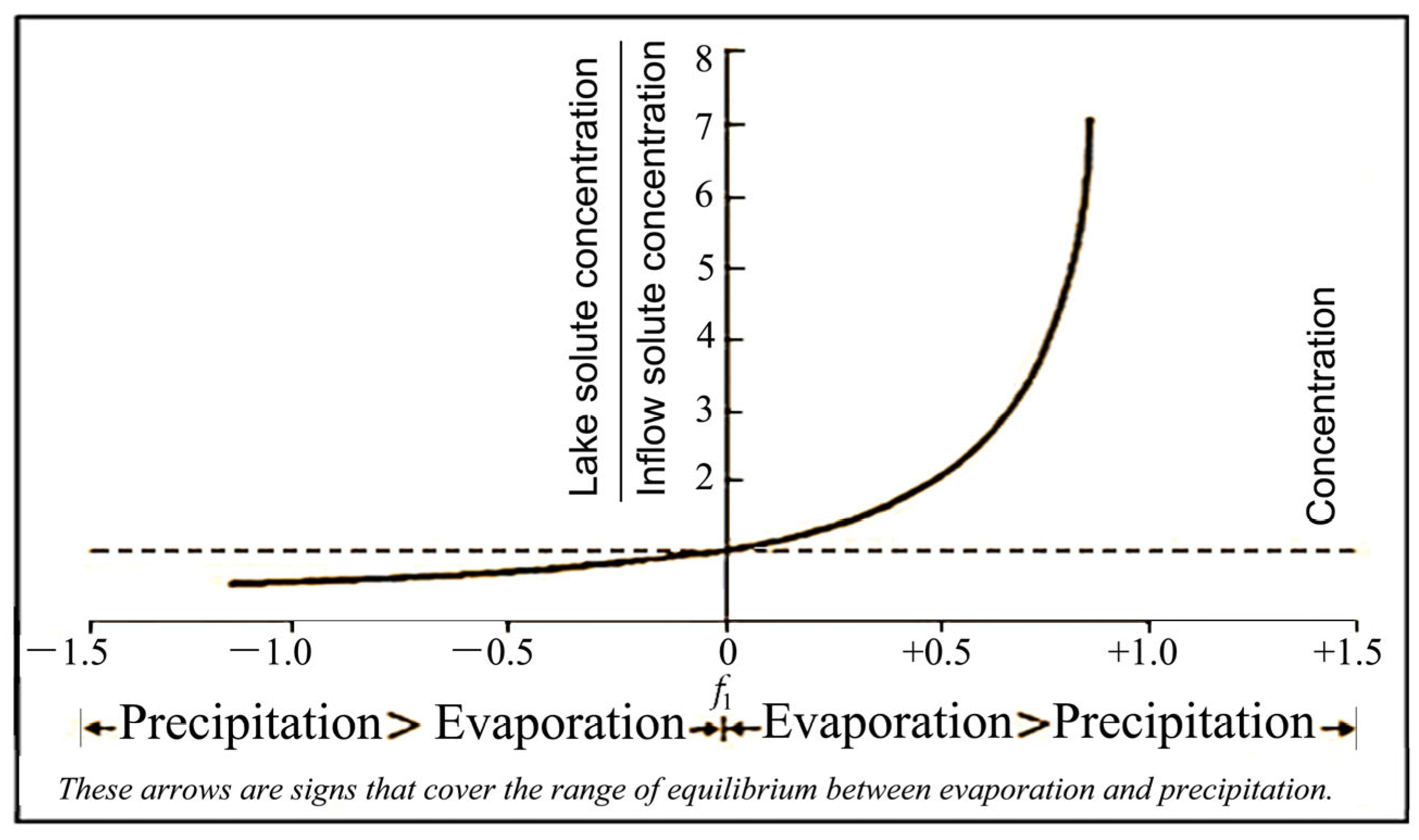
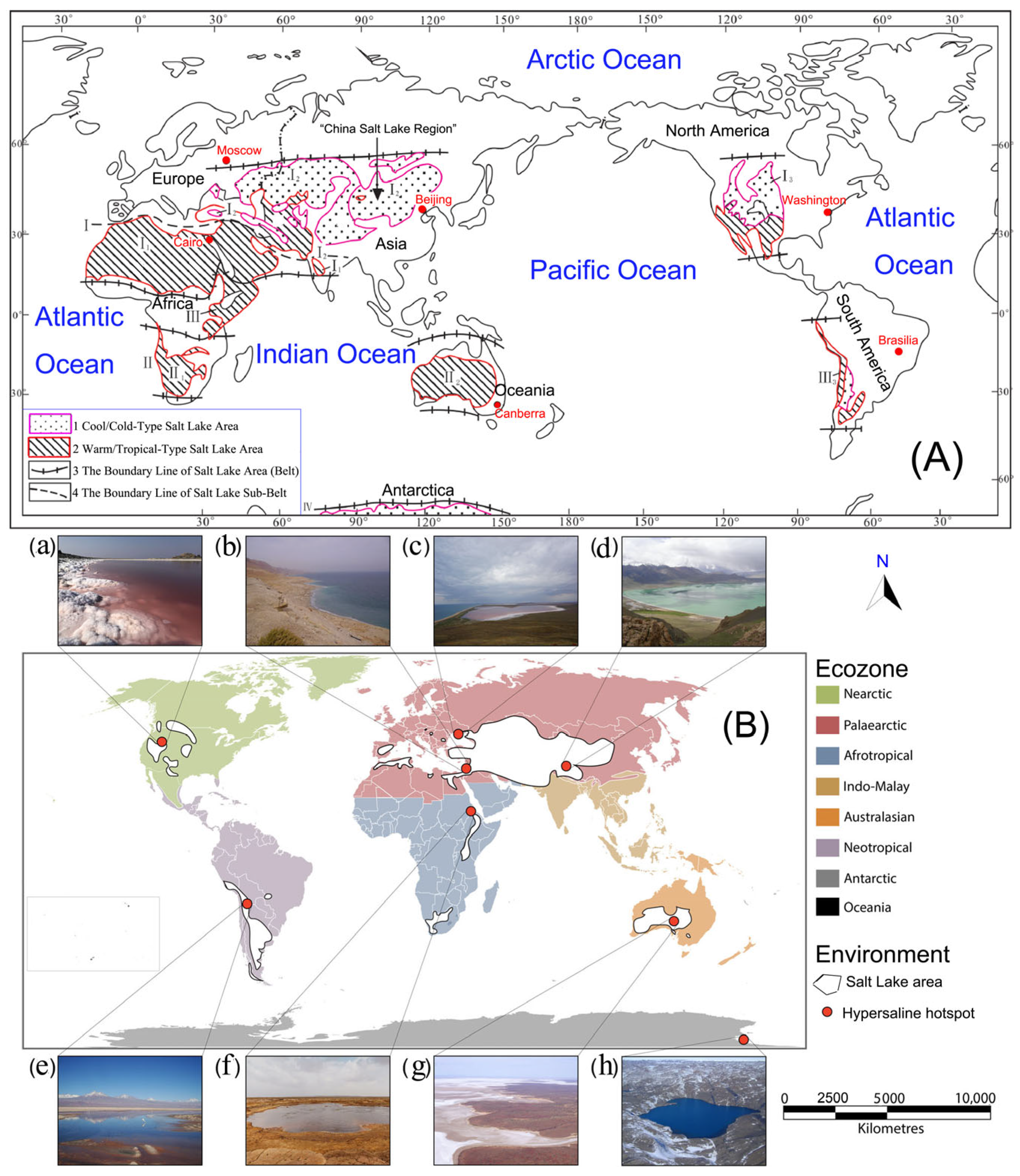
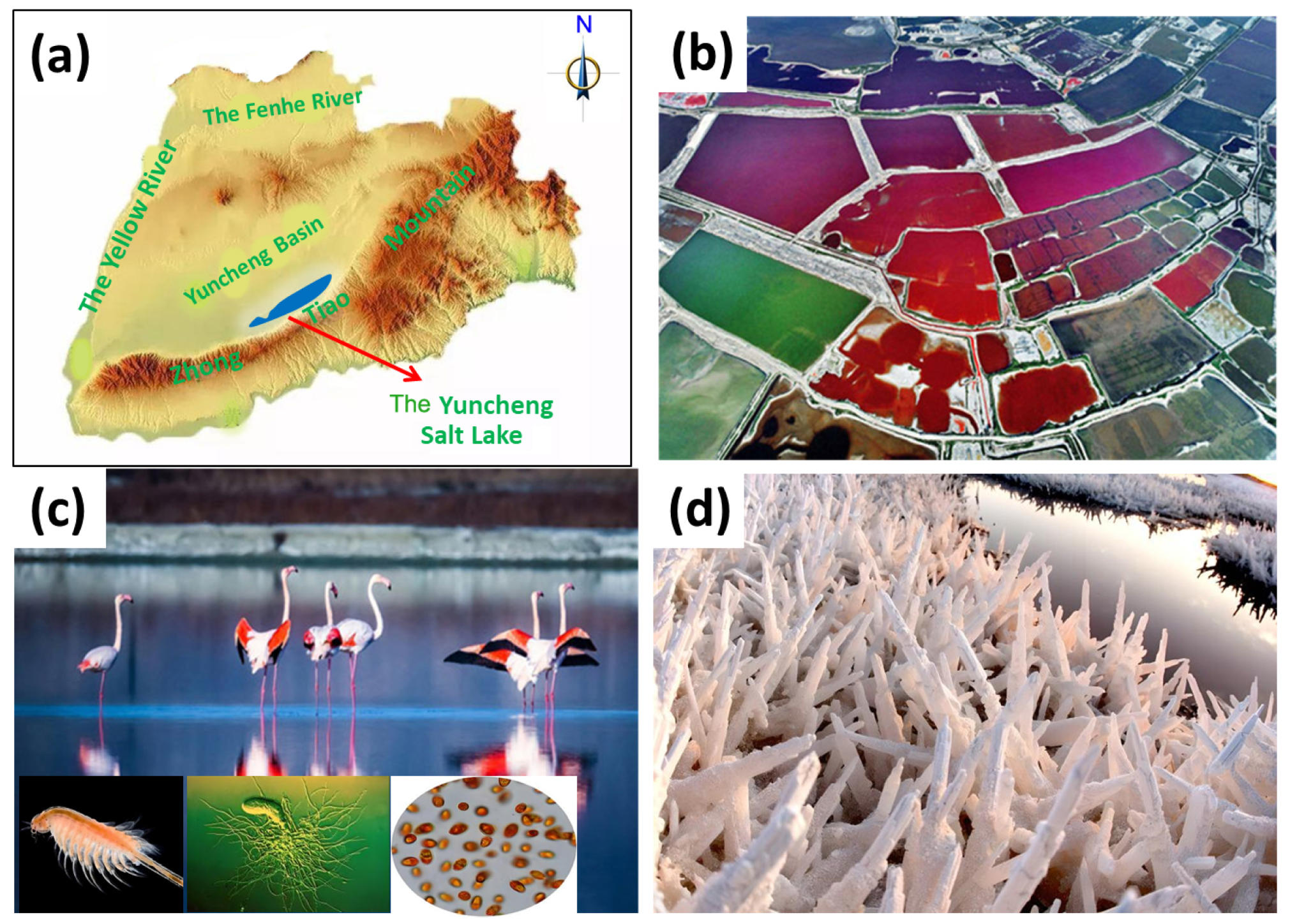
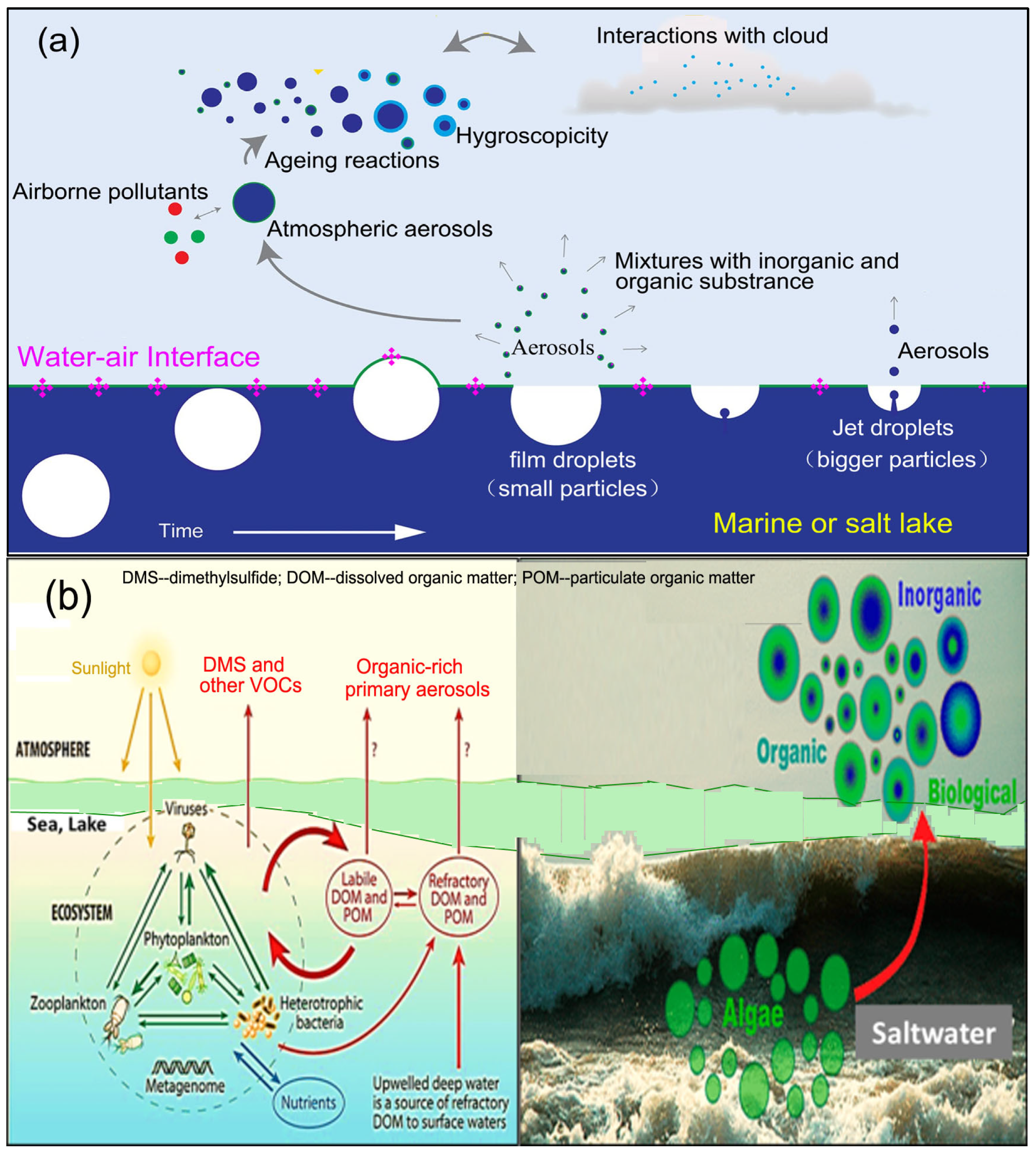

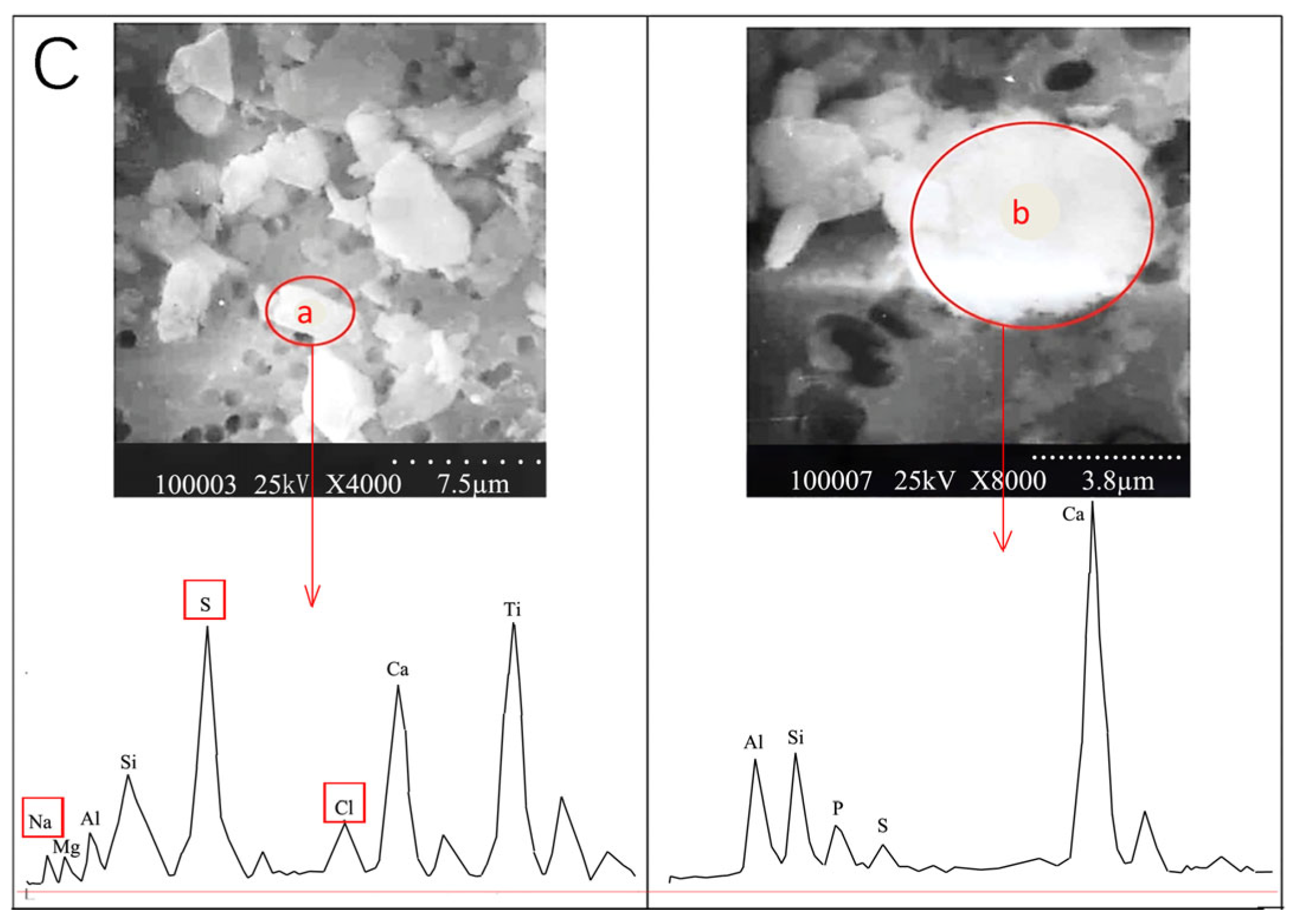
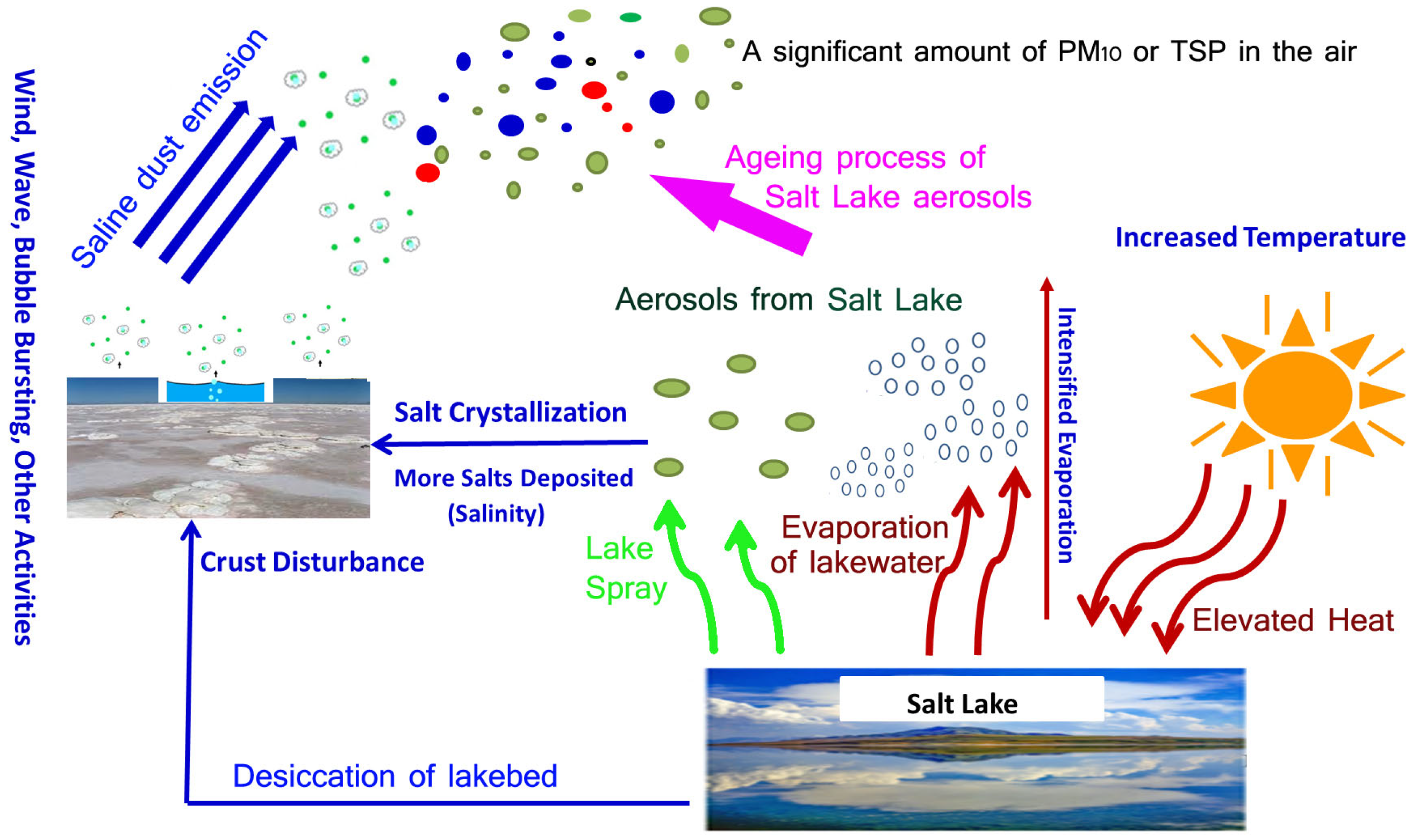

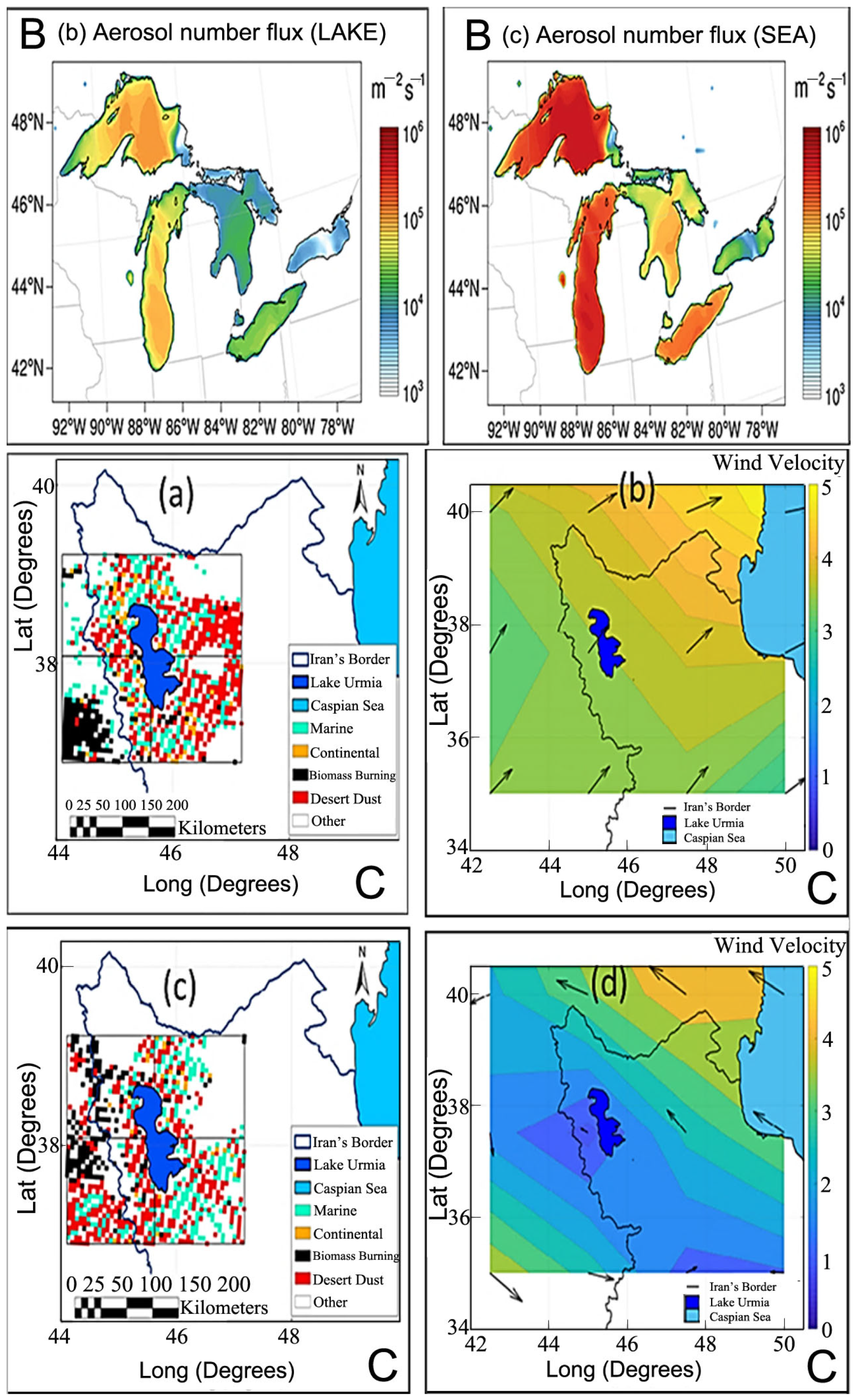
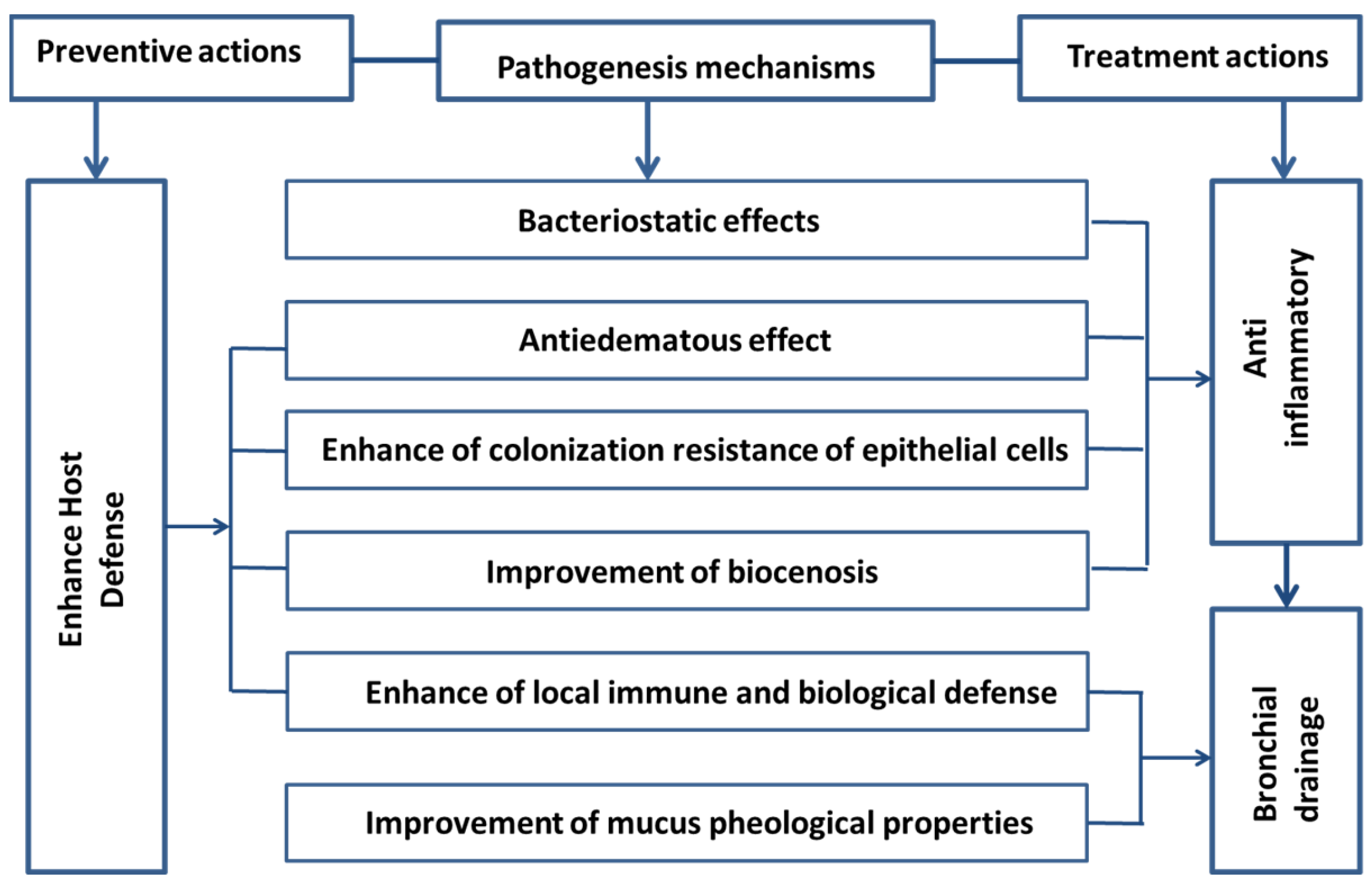
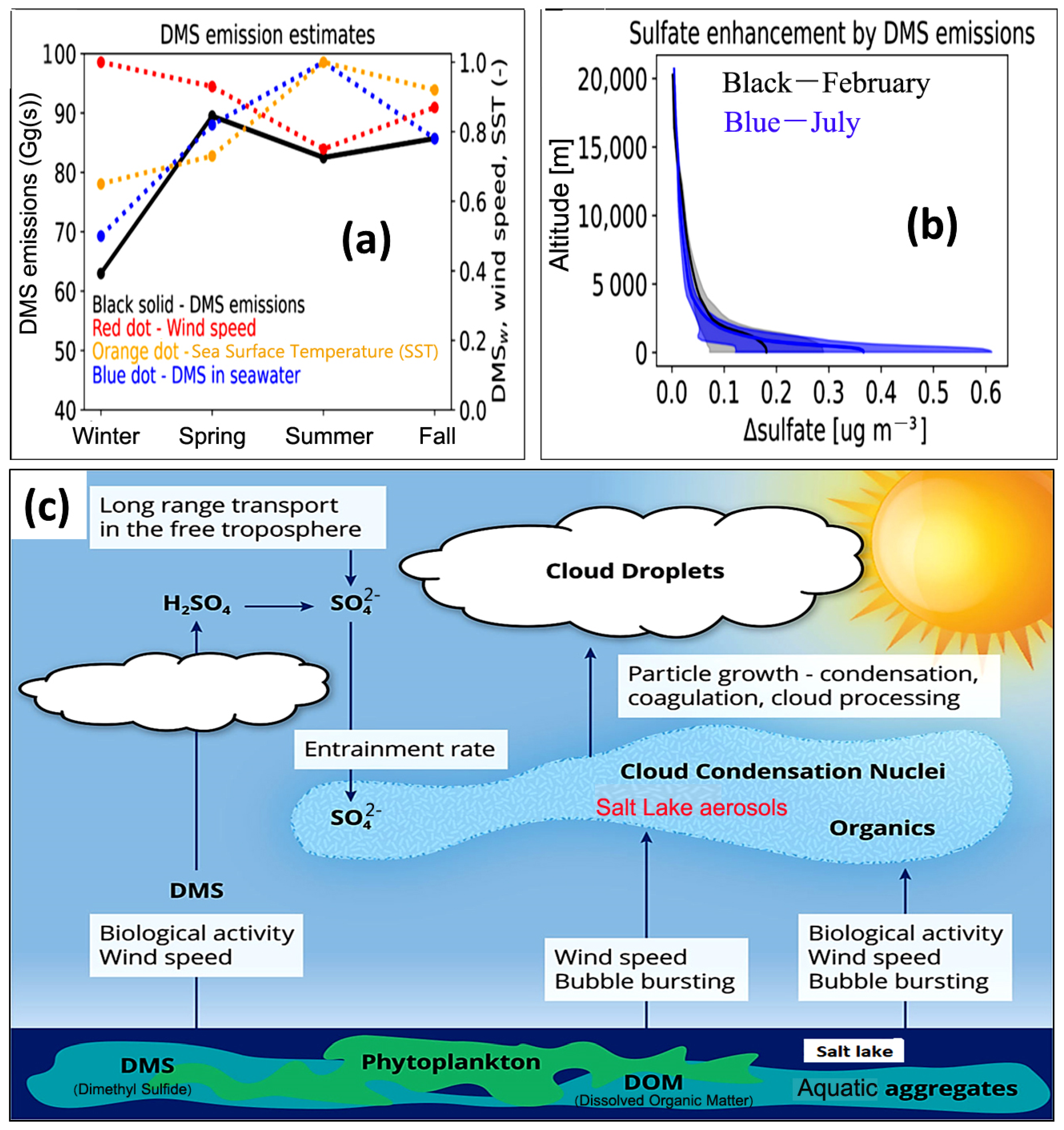
| Site | Sampling Period | Size Fraction | Na+ | NH4+ | K+ | Mg2+ | Ca2+ | Cl− | NO3− | SO42− | Reference |
|---|---|---|---|---|---|---|---|---|---|---|---|
| Urmia Lake | Jan–Sep (2013) | TSP-(PM10) (Mean value) | 1.99 | 0.87 | 0.47 | 0.17 | 2.09 | 1.88 | 2.81 | 4.20 | [77] |
| Nov (2007), (Sample A) | TSP | 0.13 | 0.13 | 0.04 | 0.02 | 0.13 | 0.11 | 0.13 | 0.39 | ||
| Lake Eyre | Sample (E) | TSP | 0.14 | 0.20 | 0.04 | 0.02 | 0.23 | 0.08 | 0.17 | 0.58 | [78] |
| Qinghai Lake | June–Sep (2010) | PM2.5 | 0.13 | - | 0.12 | 0.06 | 0.23 | 0.07 | 0.38 | 4.45 | [82] |
| TSP | 0.48 | - | 0.13 | 0.26 | 0.72 | 0.39 | 1.3 | 5.04 |
Disclaimer/Publisher’s Note: The statements, opinions and data contained in all publications are solely those of the individual author(s) and contributor(s) and not of MDPI and/or the editor(s). MDPI and/or the editor(s) disclaim responsibility for any injury to people or property resulting from any ideas, methods, instructions or products referred to in the content. |
© 2024 by the authors. Licensee MDPI, Basel, Switzerland. This article is an open access article distributed under the terms and conditions of the Creative Commons Attribution (CC BY) license (https://creativecommons.org/licenses/by/4.0/).
Share and Cite
Abbas, M.S.; Yang, Y.; Zhang, Q.; Guo, D.; Godoi, A.F.L.; Godoi, R.H.M.; Geng, H. Salt Lake Aerosol Overview: Emissions, Chemical Composition and Health Impacts under the Changing Climate. Atmosphere 2024, 15, 212. https://doi.org/10.3390/atmos15020212
Abbas MS, Yang Y, Zhang Q, Guo D, Godoi AFL, Godoi RHM, Geng H. Salt Lake Aerosol Overview: Emissions, Chemical Composition and Health Impacts under the Changing Climate. Atmosphere. 2024; 15(2):212. https://doi.org/10.3390/atmos15020212
Chicago/Turabian StyleAbbas, Muhammad Subtain, Yajuan Yang, Quanxi Zhang, Donggang Guo, Ana Flavia Locateli Godoi, Ricardo Henrique Moreton Godoi, and Hong Geng. 2024. "Salt Lake Aerosol Overview: Emissions, Chemical Composition and Health Impacts under the Changing Climate" Atmosphere 15, no. 2: 212. https://doi.org/10.3390/atmos15020212
APA StyleAbbas, M. S., Yang, Y., Zhang, Q., Guo, D., Godoi, A. F. L., Godoi, R. H. M., & Geng, H. (2024). Salt Lake Aerosol Overview: Emissions, Chemical Composition and Health Impacts under the Changing Climate. Atmosphere, 15(2), 212. https://doi.org/10.3390/atmos15020212








